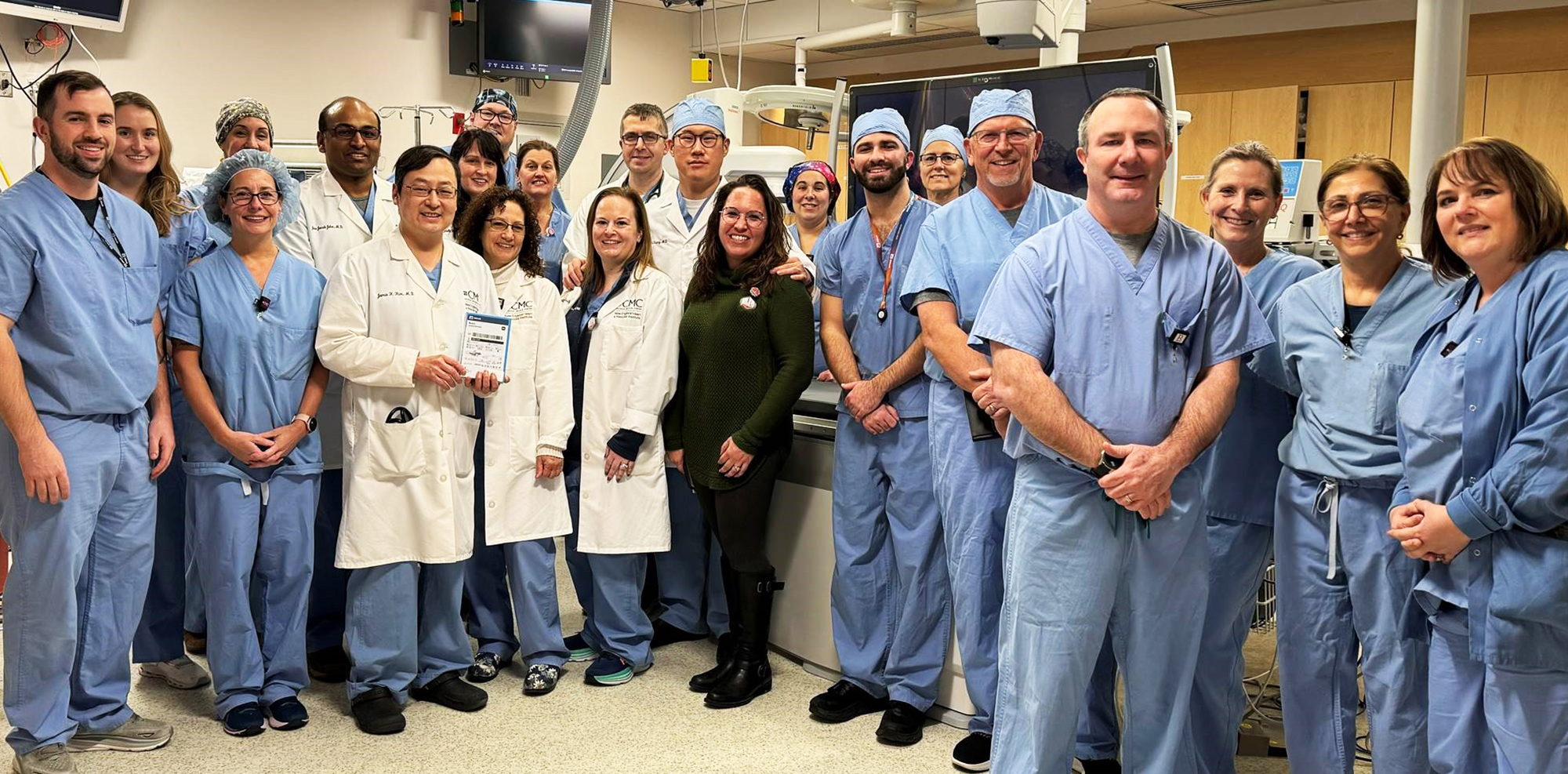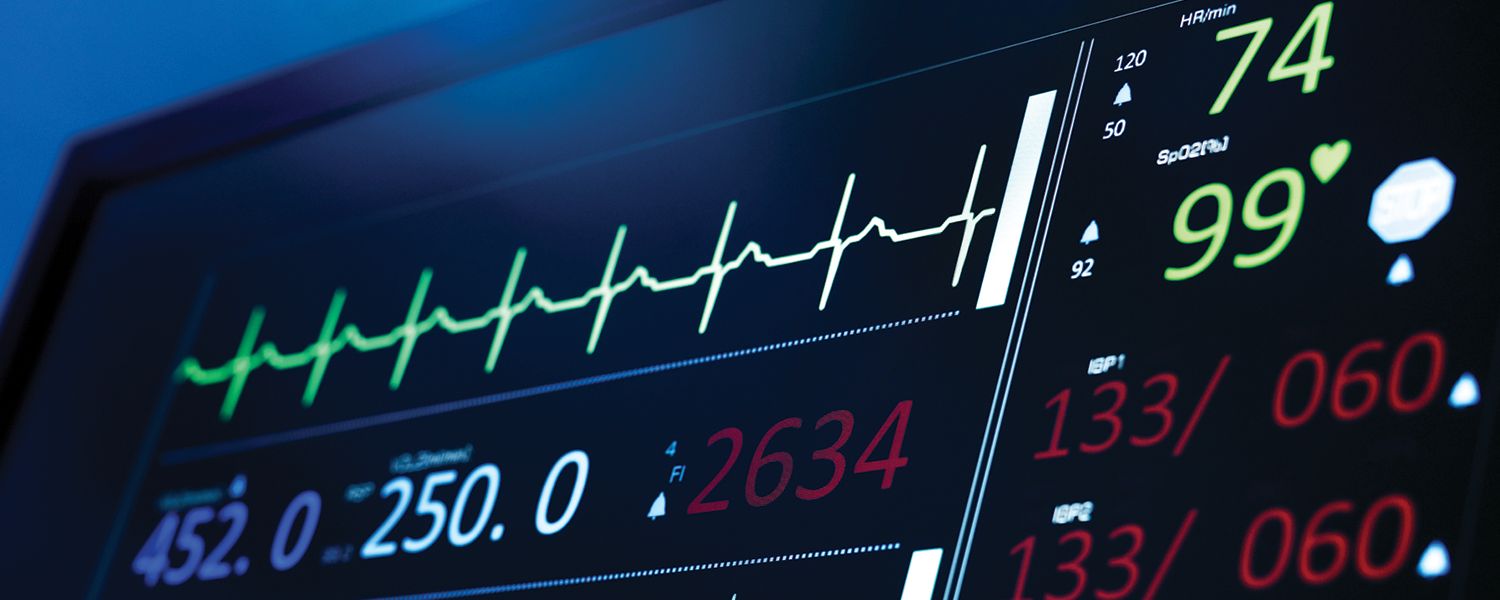Arrhythmia is a condition where the heart beats with an abnormal rhythm. It can cause the heart to beat too fast (tachycardia), too slow (bradycardia), or in an irregular pattern. There can be many causes for arrhythmia. CMC provides you with the latest treatment options to address your arrhythmia and restore your heart’s normal function.
Diagnostic testing made include:
- Echocardiogram
- Electrocardiogram (ECG or EKG)
- Electrophysiological Testing and Mapping
- Holter Monitor
- Implantable Loop Recorder
- Stress Test
Types of Arrhythmia:
Atrial Fibrillation (A-Fib)
A-Fib is a complex heart condition affecting more than two million people in the United States. Your heart has an electrical system that controls your heartbeat with electrical impulses starting in the upper chambers (atria) of your heart, causing them to contract. A-Fib occurs when these signals become irregular, causing the atria to beat out of sync with the lower chambers (ventricles), disrupting the heart’s normal blood flow. Atrial fibrillation can lead to many symptoms such as palpitations, chest discomfort, trouble breathing, and low energy levels. In some cases, A-Fib can be silent and go unrecognized until serious complication occur. A-Fib can cause blood to pool in the heart, leading to stroke, heart failure and other heart related complications.
According to the Heart Rhythm Society, 160,000 new patients are diagnosed every year with this serious condition. The goals of A-Fib treatment are to eliminate symptoms and to reduce the likelihood of complications such as stroke. The specialists at CMC offer a comprehensive treatment program for patients using the latest technologies.
Types of A-Fib
- Paroxysmal: irregular contractions, or “episodes”, come and go, never lasting longer than a week
- Persistent: episodes last longer than a week and do not stop on their own without intervention
- Long-standing persistent: continuous episode lasting longer than one year
- Permanent: only the heart rate, not the A-Fib, is controlled
Atrial Flutter
Atrial flutter is a rapid, more organized heart rhythm from the atria that is similar to and often associated with A-Fib.
Supraventricular Tachycardia (SVT)
SVT is an abnormally fast heartbeat initiated in an area in the upper chambers of the heart.
Treatment Options for A-Fib:
A Full Spectrum of Care
Physicians and surgeons at CMC collaborate to provide complete care for our patients. Treatments range from lifestyle modifications and medication to minimally-invasive procedures and surgery. Each patient's treatment plan is tailored to what is best for them. Therapies include:
Lifestyle Modification
Lifestyle modifications may include diet, exercise, weight management, smoking cessation and limiting alcohol intakeMedication
Medications may include blood thinners ,which can be successful in reducing stroke risk related to A-FibProcedures
Ablation: a minimally invasive procedure that uses energy to create electrical barriers in the heart, which can eliminate the abnormal rhythm or block the electrical signals that trigger the abnormal rhythm.
Cardioversion: electrical shocks are applied to restore normal heart rhythm; may be used in combination with medication.
Convergent: for persistent A-Fib, this approach uses ablation both inside and outside the heart to restore normal rhythm.
Left Atrial Appendage Closure (LAAC): this helps to prevent stroke by using a device—like the WATCHMAN™ or a clip, to close off the small chamber of the heart where blood tends to pool and form stroke-causing clots.
Pacemaker: a device implanted underneath the skin that monitors heart rhythm. It sends electrical signals to stimulate the heart and control rhythm problems like a slow or irregular heartbeat.
Surgical Ablation: the MAZE procedure is an ablation performed while the patient is having a surgical procedure for another heart condition, such as coronary artery disease or heart valve disease.
Implantable Loop Monitor: a device implanted underneath the skin that can diagnose abnormal heart rhythms or monitor patients with known abnormal heart rhythms.
Why choose CMC?
The electrophysiologists at the New England Heart & Vascular Institute are leaders in their field, performing a high volume of procedures each year and introducing new treatments to patients in the region.
The World’s First Dual Chamber Leadless Pacemaker System—
Tiny Technology, Revolutionized Care
A new minimally invasive option to treat the nearly 80% of people who require pacing in two chambers of the heart

